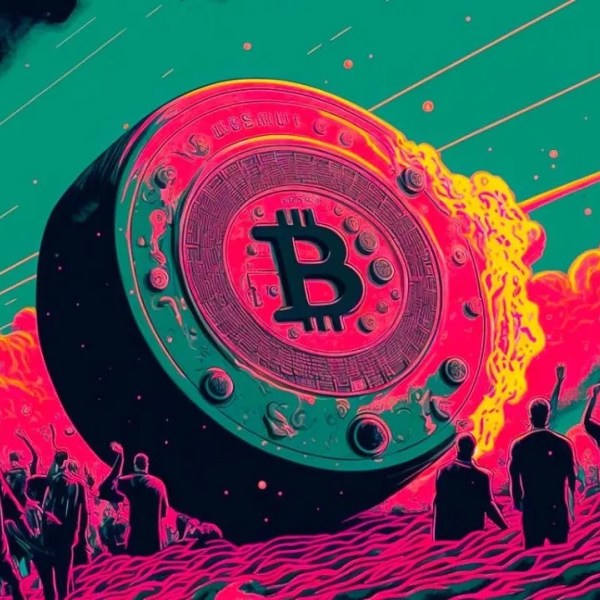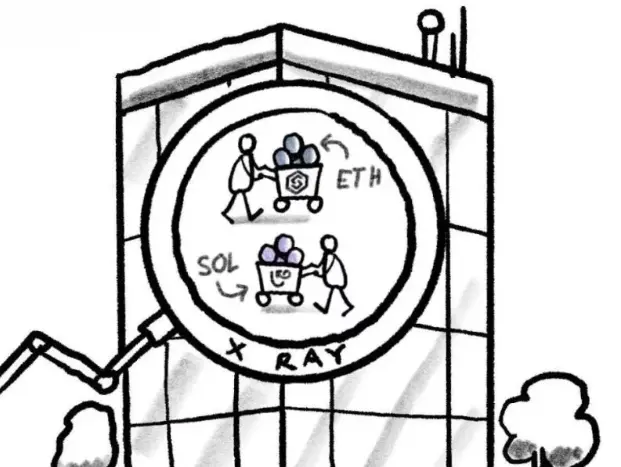Pi Network (PI) Faces Market Standoff, Prepares for Breakout
Pi Network’s PI token is currently in a consolidation phase, with its price stuck between $0.60 and $0.66. Market volatility is low, and a breakout in either direction could lead to significant price movement.
Pi Network’s PI token seems to have entered a consolidation phase, as the price action has leveled off. Since April 16, the token has faced resistance at $0.66 while finding support at $0.60, creating a narrow trading range.
This signals a period of indecision in the market, with neither PI buyers nor sellers taking full control.
PI’s Price Action in Limbo
Readings from PI’s Aroon indicator confirm the recent stagnation in its price. As of this writing, the token’s Aroon Up Line (yellow) is at 0%, while its Aroon Down Line (blue) is in decline at 14.29%.
 PI Aroon Indicator. Source:
TradingView
PI Aroon Indicator. Source:
TradingView
The Aroon indicator identifies market trends and determines whether a trend is strong or weak.
A 0% reading on the Aroon Up Line suggests that PI has not reached a new high recently, signaling a lack of upward momentum. Meanwhile, the Aroon Down Line’s decline to 14.29% indicates that the token has not been experiencing significant downward pressure either.
This trend suggests a balanced market, where neither bulls nor bears are taking the lead. The setup confirms that PI is in a consolidation phase, with a breakout in either direction dependent on shifts in market sentiment.
Further, the steady decline in PI’s Average True Range (ATR) since early March confirms the decrease in its market volatility and the shift towards consolidation. At press time, this indicator stands at 0.07.
 PI Average True Range. Source:
TradingView
PI Average True Range. Source:
TradingView
The ATR indicator measures market volatility by calculating the average range between the high and low prices over a set period. When it falls like this, it indicates a decrease in market volatility, suggesting that price movements are becoming less erratic.
This often signals a period of consolidation or indecision in the market, as traders await a potential breakout or shift in direction. For PI, this is evident as both buyers and sellers hesitate, waiting for a catalyst to drive their next moves.
Will Bullish Momentum Drive PI to $1 or Will Bears Retake Control?
A breakout—whether to the upside or downside—could signal the start of a new trend, making PI a token to watch in the coming days. If bullish pressure soars and demand for the altcoin spikes, its price could witness a rally and attempt to break above the resistance at $0.66.
A successful breach of this level could propel PI’s price to $1.
 Pi Price Analyses. Source:
TradingView
Pi Price Analyses. Source:
TradingView
Conversely, if the bears regain full control and selloffs resume, PI could break below the support at $0.60 and fall to $0.50.
Disclaimer: The content of this article solely reflects the author's opinion and does not represent the platform in any capacity. This article is not intended to serve as a reference for making investment decisions.
You may also like
Market value evaporates by 60 billions! Faith shaken, institutions on the sidelines—has bitcoin’s “post-halving crash” curse come true?
A major reason for the recent plunge is market concerns over a repeat of the "halving cycle"—that is, after a supply reduction triggers a boom, a deep correction inevitably follows. Panic selling by investors, combined with a stagnation of institutional funds and macroeconomic headwinds, have collectively led to a collapse in market confidence.

SharpLink and Upexi: Each Has Its Own Strengths and Weaknesses in DAT
For this model to be sustainable, one of the following two scenarios must occur: either staking truly becomes a corporate cash engine, continuously providing funds for digital asset purchases; or companies must incorporate the planned sale of digital assets into their digital asset strategies to achieve systematic profits.

80% is hype? Six major red lines reveal the true intentions of Stable
It appears to be an infrastructure upgrade, but in essence, it is an early, insider-friendly issuance.

Global assets are falling simultaneously—why have safe havens collectively failed?

